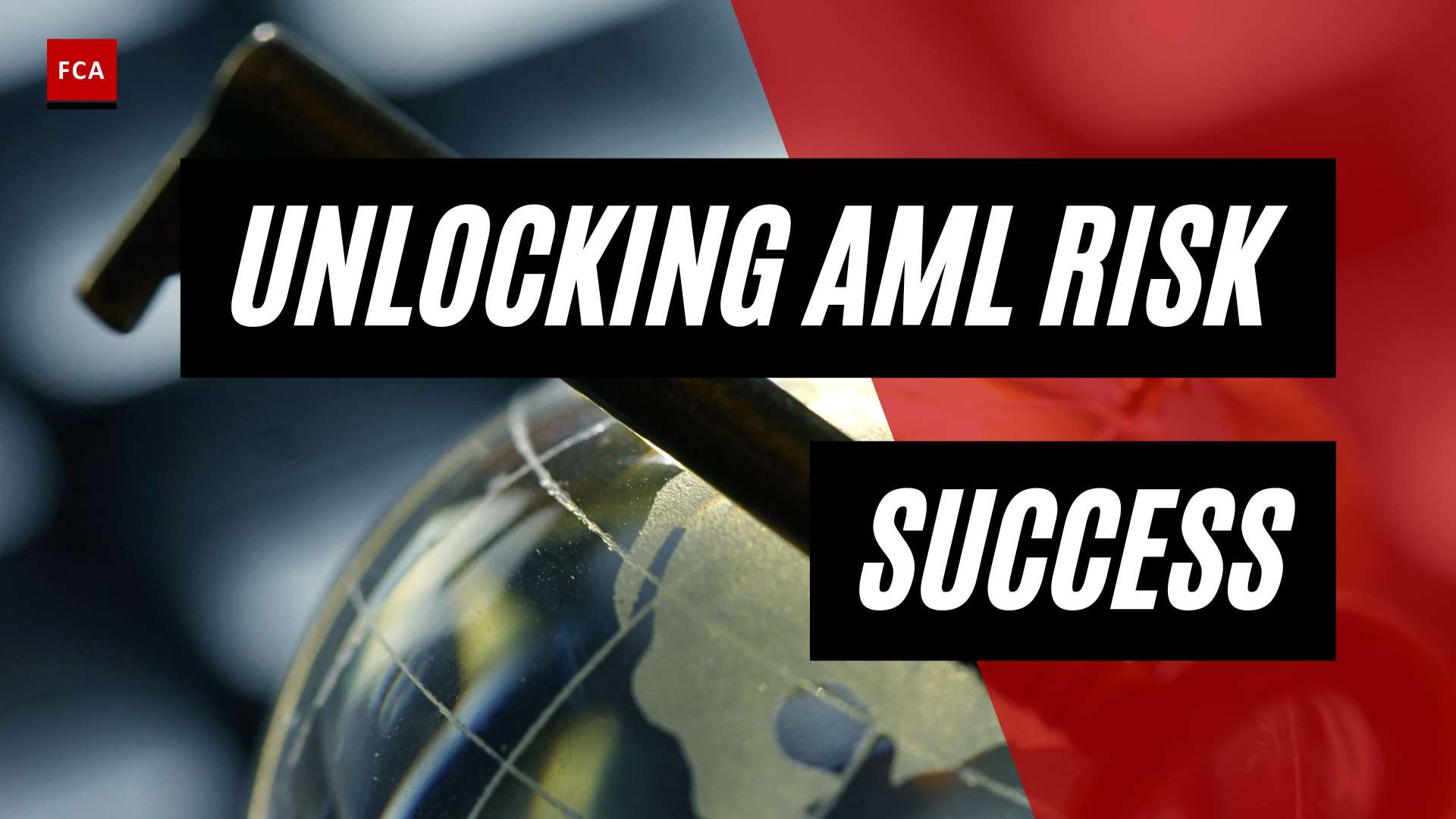Understanding Informal Value Transfer Systems
Informal Value Transfer Systems (IVTS) play a significant role in facilitating money laundering and illicit financial activities. In this section, we will explore the concept of IVTS, their role in money laundering, and common types of IVTS.
Introduction to Informal Value Transfer Systems (IVTS)
Informal Value Transfer Systems (IVTS) refer to mechanisms or networks that allow the transfer of value without the involvement of traditional financial institutions. These systems operate outside the regulated banking sector and often rely on trust and personal relationships between participants. IVTS have been utilized for both legitimate and illicit purposes, with some systems gaining notoriety for their involvement in money laundering and other illegal activities.
One well-known IVTS is Hawala, which has been used for centuries in various regions around the world. However, it is essential to note that IVTS encompasses a broader range of systems beyond Hawala, each with its own unique characteristics.
The Role of IVTS in Money Laundering
IVTS, including systems like Hawala and Fei Ch’ien, have been exploited by criminals for money laundering purposes. These systems offer anonymity, speed, and the ability to transfer funds across borders with minimal regulatory oversight. The lack of formal record-keeping and the reliance on trust-based relationships make it challenging for authorities to trace and detect illicit financial flows.
In the case of Fei Ch’ien, a parallel financial system originating from China, it has been utilized for both legitimate and illicit activities globally. Criminal organizations, such as Chinese crime syndicates known as Triads, have utilized the Fei Ch’ien network, also known as “flying money,” for money laundering and secret transactions (Cassidy, W.). The network operates through gold shops, trading companies, and money changers, employing encrypted communication systems and minimal record-keeping procedures.
Common Types of IVTS
IVTS encompass various systems and methods used to transfer value outside traditional banking channels. Some common types of IVTS include:
-
Hawala: A trust-based system that relies on a network of hawala brokers to facilitate money transfers (hawala networks). Hawala operates on the principle of honor and trust among participants, allowing for the movement of funds without physically transferring cash. It has been utilized in regions such as the Middle East, South Asia, and parts of Africa for legitimate remittances as well as illicit activities (hawala money laundering).
-
Fei Ch’ien: Originating from China, Fei Ch’ien is an underground banking network used for money laundering and secret transactions. It operates through gold shops, trading companies, and money changers, with minimal record-keeping procedures and encrypted communication systems. The secretive nature of Fei Ch’ien and the use of encrypted communication devices make investigations into related activities challenging.
-
Other Alternative Remittance Systems: Apart from Hawala and Fei Ch’ien, there are various other informal value transfer systems utilized globally. These systems include hundi, chit funds, and other underground banking networks. Each system may have specific characteristics and regional variations, but they share the commonality of operating outside the traditional banking sector.
Understanding the nature and characteristics of IVTS is crucial for combating money laundering and illicit financial activities. Regulators and law enforcement agencies are continually working to develop regulations and strategies to detect and prevent the misuse of IVTS in the global fight against financial crime.
Exploring Hawala and Fei Ch’ien
To understand the risks and consequences of the money laundering scheme known as Fei Ch’ien, it’s important to first explore the system of Hawala, as Fei Ch’ien shares similarities with this informal value transfer system.
Hawala: An Overview
Hawala is an informal money transfer system that originated in the Islamic world, particularly in South Asia and the Middle East. It operates on trust and relies on a network of hawala brokers. The system allows for the transfer of funds without the physical movement of money across borders. Instead, it relies on the mutual understanding and reputation among brokers and their associates to facilitate transactions.
Hawala transactions are typically based on a verbal or written agreement between the sender and the hawala broker. The sender provides the funds to the local hawala broker, who then contacts the recipient’s hawala broker in the destination country to arrange for the disbursement of funds. The recipient can then collect the funds from their local hawala broker.
Due to its informal nature and reliance on trust, hawala is challenging for authorities to trace, making it a preferred method for illicit actors to move funds across borders. However, it’s important to note that hawala itself is not inherently illegal. It is a legitimate financial system used by individuals for various reasons, including facilitating remittances for legitimate purposes, especially in countries with limited access to formal banking services (LinkedIn).
Fei Ch’ien: A Historical Perspective
Fei Ch’ien, meaning “flying money” in Chinese, is a historical Chinese system of transferring funds that was primarily used for trade. It involved the use of promissory notes or bills of exchange to facilitate long-distance trade during the Tang and Song dynasties. Compared to Hawala, Fei Ch’ien was more formalized and regulated.
Fei Ch’ien networks have had modern iterations in East Asia and have been used by networks in the United States to evade anti-money laundering (AML) and counter-terrorism financing (CFT) controls. These transnational criminal organizations (TCOs) generate significant illicit proceeds from various illegal activities, including drug trafficking, human smuggling, and the illegal wildlife trade. Fei Ch’ien is employed by these networks to launder the proceeds of their illicit activities, move value across international borders, and evade detection by financial institutions, law enforcement, and regulators.
It’s worth noting that the term “Fei Ch’ien” also refers to ancient Chinese coins introduced during the Qin Dynasty around 221 BC. These coins played a crucial role in unifying the monetary system in China, supporting economic growth and trade. However, the modern Fei Ch’ien scheme involving money laundering is distinct from its historical coinage counterpart.
By exploring the concepts of Hawala and Fei Ch’ien, we can better understand the historical and operational aspects of this money laundering scheme. In the subsequent sections, we will delve deeper into how Hawala works and the specific risks associated with Fei Ch’ien networks. Additionally, we will explore the regulatory efforts aimed at combating informal value transfer systems and money laundering.
How Hawala Works
In order to understand the intricacies of the hawala system, it is important to grasp how this trust-based system operates. Hawala, an informal value transfer system (IVTS), has been historically associated with South Asia and the Middle East, but it now enjoys widespread use across the globe, primarily by members of expatriate communities who migrated to various regions.
Trust-Based System
At the core of the hawala system lies trust. The system relies on personal relationships, kinship ties, and ethnic connections between hawaladars (hawala brokers) and individuals seeking to transfer funds. This trust is often built over generations and is considered stronger than legal agreements. The familiarity and personal connections within the hawala network form the foundation of this system.
Hawala Transactions Process
The process of a hawala transaction typically involves several steps:
- Initiation: The sender, also known as the remitter, approaches a hawaladar and provides the funds they wish to transfer.
- Instructions: The sender provides specific instructions to the hawaladar, including the recipient’s name, location, and any other relevant details.
- Code or Password: The sender may also provide a code or password that the recipient will need to present to the hawaladar at the destination.
- Record Keeping: The hawaladar records the transaction details, often using a simple ledger or memory-based system. However, minimal record-keeping is one of the characteristics of the hawala system.
- Verification and Trust: The hawaladar, based on trust and prior agreements, contacts another hawaladar or a network of hawaladars at the destination to arrange for the transfer of funds to the recipient.
- Delivery: The recipient visits the hawaladar at the destination and provides the agreed-upon code or password to confirm their identity. The hawaladar then provides the funds to the recipient in the local currency or as per the agreed terms.
- Settlement: The hawaladar at the destination settles the transaction by offsetting it against other hawala transactions, often through trade or other mechanisms, minimizing the need for physical movement of funds across borders.
This process enables the swift transfer of funds without the need for physical movement of money, making it challenging for authorities to trace transactions. The hawala system’s simplicity, cost-effectiveness, and speed have made it an attractive alternative remittance system, particularly for expatriate communities.
Understanding how hawala operates is crucial in recognizing the potential risks and vulnerabilities associated with this informal value transfer system. By focusing on regulatory efforts and strategies to combat IVTS and money laundering, authorities and financial institutions can work towards reducing the risks posed by hawala and other similar systems.
Fei Ch’ien and Money Laundering
Fei Ch’ien, also known as flying money, is an informal value transfer system (IVTS) that operates as a parallel financial system originating from China. This system allows for the transfer of value without the physical movement of cash, relying on trust among participants. While Fei Ch’ien can be used for legitimate purposes, it has also been utilized for illicit activities such as money laundering and secret transactions (Cassidy, W.).
Fei Ch’ien Networks and Money Laundering
Fei Ch’ien networks are often associated with Chinese crime syndicates, such as the Triads. These criminal organizations utilize the Fei Ch’ien system as part of their money laundering operations. Through a network of gold shops, trading companies, and money changers, they are able to move funds undetected, diversify their assets, and obscure the origins of illicit funds. The lack of rigorous record-keeping procedures and the use of encrypted communication systems contribute to the secretive nature of these transactions, making it challenging for authorities to detect and trace the flow of illicit funds.
Fei Ch’ien’s involvement in money laundering highlights the vulnerabilities and risks associated with informal value transfer systems. The lack of regulatory oversight and the ability to conduct transactions on an international scale make it difficult for authorities to access information and gather evidence for investigations. These factors contribute to the resilience of Fei Ch’ien networks in facilitating illicit financial activities.
Challenges in Investigating Fei Ch’ien Activities
Investigations into Fei Ch’ien activities present unique challenges for law enforcement agencies. The secretive nature of the system, coupled with the use of encrypted communication devices, makes it difficult to intercept and monitor the flow of information among participants. The international scale of financial transactions further complicates investigations, as cooperation and coordination among multiple jurisdictions may be required.
Moreover, Fei Ch’ien activities often involve complex money laundering schemes that utilize multiple layers of transactions and legitimate businesses. These schemes aim to disguise the origin and ownership of illicit funds, making it challenging for authorities to follow the money trail and gather sufficient evidence for prosecution.
To combat Fei Ch’ien activities and other forms of money laundering, international regulatory efforts have been implemented. These efforts focus on enhancing collaboration among law enforcement agencies, improving information sharing mechanisms, and implementing stricter regulatory frameworks to monitor and detect suspicious financial transactions (Plant, S.). However, the ever-evolving nature of money laundering schemes necessitates ongoing vigilance and adaptability in combating these illicit activities.
Understanding the risks associated with Fei Ch’ien and other informal value transfer systems is crucial for regulatory authorities and professionals working in compliance, risk management, anti-money laundering, and anti-financial crime. By staying informed about the latest trends and challenges in combating money laundering, these professionals can contribute to the ongoing efforts to mitigate the risks posed by Fei Ch’ien networks and other illicit financial activities.
Regulatory Efforts and Combating IVTS
To address the risks associated with Informal Value Transfer Systems (IVTS), including schemes like Fei Ch’ien, regulatory bodies around the world have implemented international regulations and strategies aimed at combating money laundering and illicit activities.
International Regulations on IVTS
Financial institutions and other entities involved in the financial sector play a crucial role in adhering to international regulations to prevent the misuse of IVTS for money laundering and terrorist financing. These regulations provide guidelines and requirements for identifying and reporting suspicious transactions related to IVTS.
One such regulatory body is the Financial Crimes Enforcement Network (FinCEN) in the United States. FinCEN has issued advisories to alert financial institutions about the potential risks associated with Fei Ch’ien schemes and the need to enhance their anti-money laundering/countering the financing of terrorism (AML/CFT) safeguards. The advisories highlight the significant potential for foreign-influenced actors to use Fei Ch’ien schemes to evade AML/CFT safeguards (FinCEN).
By disseminating information and guidance, regulatory bodies aim to increase awareness, improve reporting mechanisms, and ensure that financial institutions have the necessary tools to identify and report suspicious activities related to IVTS effectively.
Strategies to Combat IVTS and Money Laundering
In addition to regulations, various strategies are employed to combat IVTS and the associated money laundering risks. These strategies involve collaboration between government agencies, financial institutions, and law enforcement agencies to enhance detection, investigation, and prosecution efforts.
-
Enhanced due diligence: Financial institutions are encouraged to implement enhanced due diligence measures to identify and mitigate the risks associated with IVTS. This may include conducting thorough customer due diligence, monitoring transactions for suspicious activities, and implementing robust internal controls.
-
Information sharing: Collaboration and information sharing between financial institutions, regulatory bodies, and law enforcement agencies are vital in combating IVTS. Sharing intelligence and suspicious activity reports can help identify patterns, trends, and key players involved in illicit IVTS activities.
-
Training and awareness: Providing training and awareness programs to financial institution employees, compliance professionals, and law enforcement personnel is crucial for effectively detecting and combating IVTS-related money laundering. These programs educate individuals on the characteristics of IVTS, red flags to watch out for, and the importance of reporting suspicious activities.
-
International cooperation: Given the transnational nature of IVTS, international cooperation is essential to combat money laundering effectively. Collaboration between countries in sharing information, coordinating investigations, and extraditing individuals involved in IVTS-related illicit activities strengthens the global response to these schemes.
-
Technological advancements: Leveraging technological advancements, such as data analytics and artificial intelligence, can enhance the detection and monitoring capabilities of financial institutions and regulatory bodies. These tools can help identify patterns, anomalies, and suspicious activities related to IVTS more efficiently.
By implementing these strategies and working together, regulatory bodies, financial institutions, and law enforcement agencies aim to disrupt and deter IVTS-related money laundering, safeguarding the integrity of the global financial system.
It is important to note that investigations into cases involving Fei Ch’ien are challenging due to its secretive nature, the use of encrypted communication devices, and international financial transactions (LinkedIn). However, with ongoing efforts and collaboration, authorities strive to stay ahead of emerging threats and mitigate the risks associated with IVTS and money laundering.
Exploring Hawala and Fei Ch’ien
In the realm of informal value transfer systems (IVTS), Hawala and Fei Ch’ien are two notable examples that have been associated with money laundering and illicit financial activities. Understanding these systems is crucial in combating such illicit practices.
Hawala: An Overview
Hawala is an ancient system of money transfer that originated in the Middle East and South Asia. It operates on a trust-based system, relying on a network of hawala brokers who facilitate the movement of funds without the need for physical currency. The process involves a sender providing funds to a hawala broker, who then instructs another broker located in the recipient’s area to distribute the equivalent amount to the intended recipient. The system is based on trust and the reputation of the brokers involved, with minimal documentation and record-keeping.
Fei Ch’ien: A Historical Perspective
Fei Ch’ien, also known as “flying money,” is a parallel financial system that originated in China. While its historical context relates to the ancient Chinese coinage system, the term Fei Ch’ien has also been associated with the underground banking networks used for money laundering and secret transactions by Chinese crime syndicates, such as the Triads (Cassidy, W.). These networks operate through gold shops, trading companies, and money changers, often with minimal record-keeping procedures and encrypted communication systems (Plant, S.).
Fei Ch’ien has been utilized for both legitimate and illicit purposes globally, making it a significant concern for regulators and authorities (LinkedIn). Investigations into Fei Ch’ien networks are particularly challenging due to their secretive nature, use of encrypted communication devices, and international financial transactions (LinkedIn).
To effectively combat money laundering and illicit financial activities associated with IVTS like Fei Ch’ien and Hawala, regulatory efforts and strategies have been implemented globally. These are aimed at enhancing transparency, strengthening international cooperation, and ensuring compliance with anti-money laundering and counter-terrorism financing regulations.
For a comprehensive understanding of regulatory efforts and strategies to combat IVTS and money laundering, refer to our article on international regulations on IVTS and strategies to combat IVTS and money laundering. By staying informed and enforcing robust regulatory frameworks, authorities can work towards mitigating the risks associated with these informal value transfer systems.









